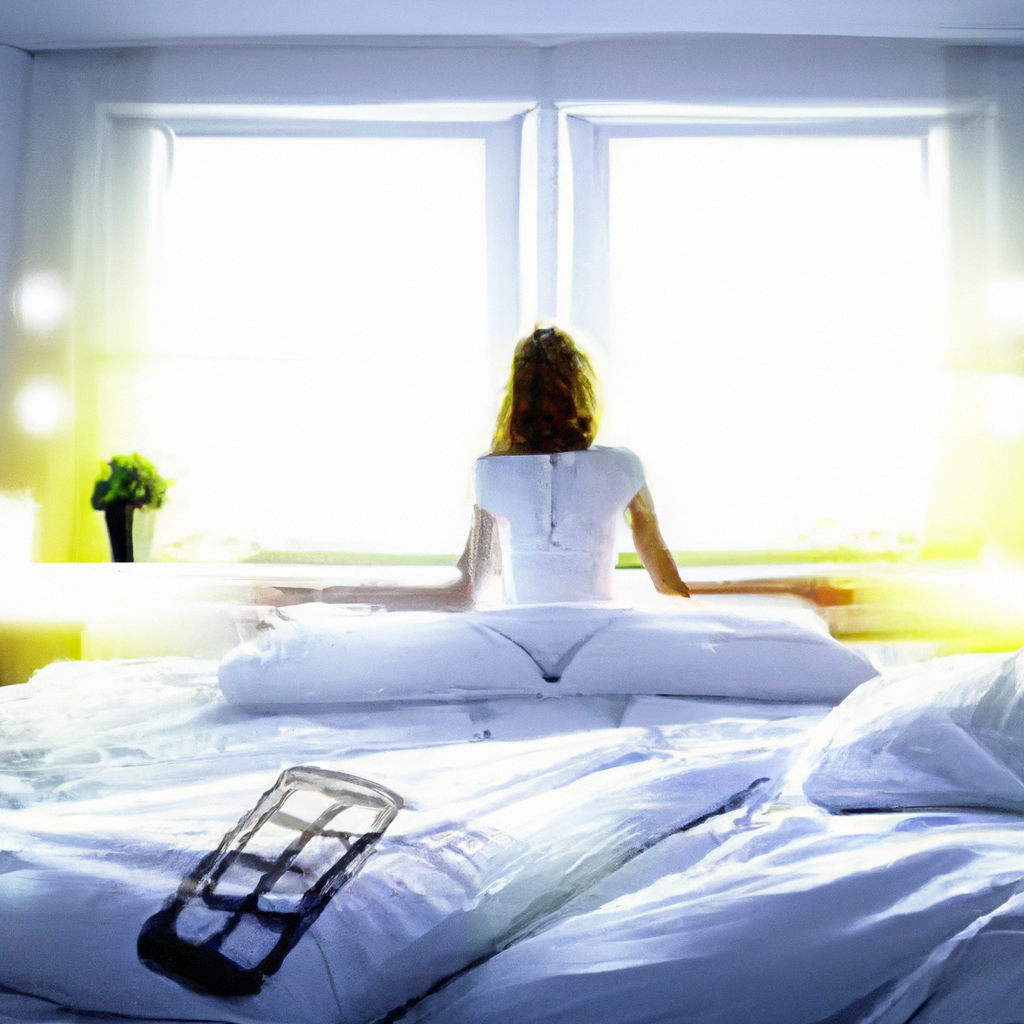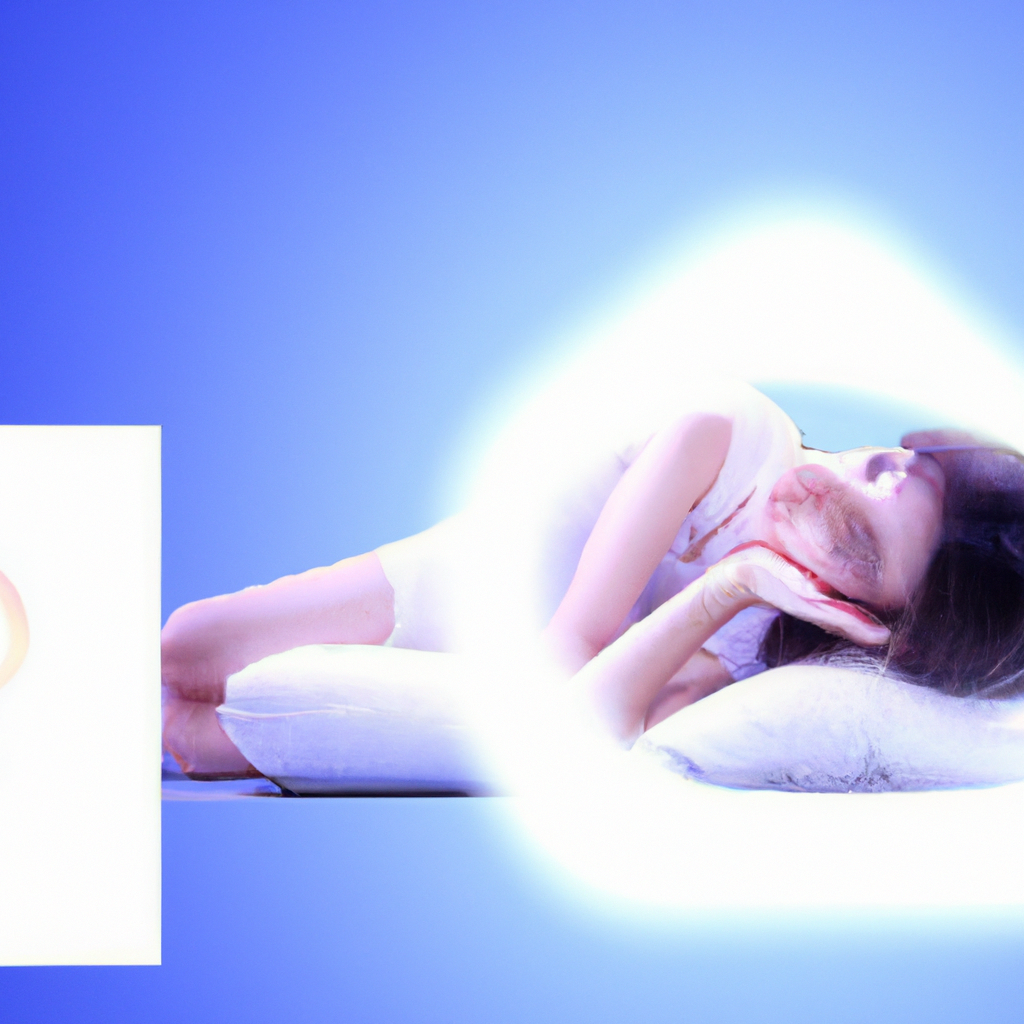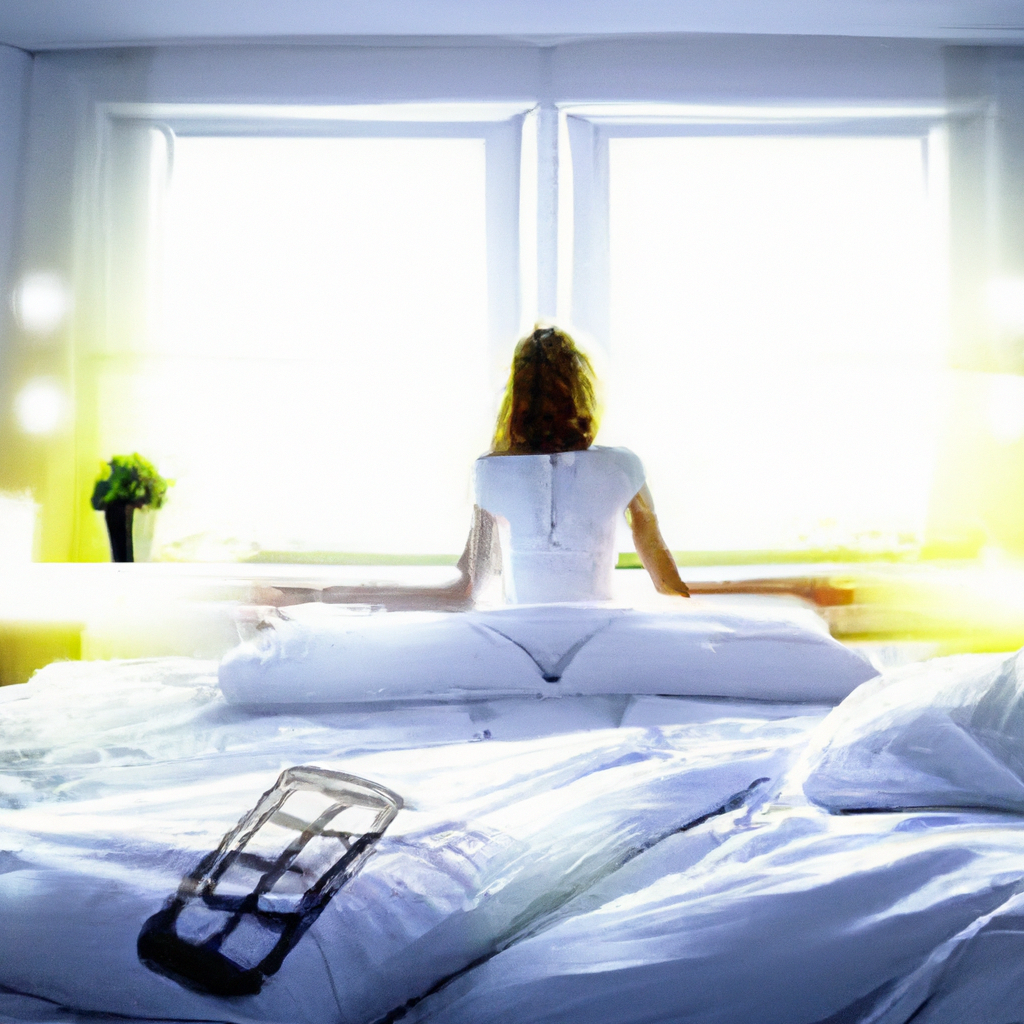Have you ever struggled with getting a good night’s sleep? Well, you’re not alone. Many people face difficulties when it comes to falling asleep and maintaining a healthy sleep schedule. But what if I told you there might be a solution right at your fingertips? In recent years, there has been a rise in the popularity of smart lights designed specifically to support sleep and circadian rhythms. These innovative lights are equipped with various features that aim to create a more conducive sleep environment and help regulate your body’s internal clock. So, if you’re looking to optimize your sleep experience, it might be time to consider investing in these smart lighting solutions.

Understanding Circadian Rhythms
What are circadian rhythms?
Circadian rhythms refer to the natural, internal process that regulates the sleep-wake cycle, biological functions, and behavior patterns of living organisms, including humans. These rhythms are essentially our body’s internal clock, enabling us to stay awake and alert during the day and promoting restful sleep at night. Our circadian rhythms are influenced by various factors, with light being one of the most significant.
The role of light in regulating circadian rhythms
Light plays a crucial role in synchronizing our circadian rhythms. The primary source of light that affects our internal clock is natural light, particularly sunlight. Exposure to bright, natural light in the morning and throughout the day helps our bodies understand that it is daytime, which promotes wakefulness and alertness. Conversely, when the sun sets and natural light diminishes, it signals our bodies to prepare for sleep and triggers the release of the sleep hormone, melatonin.
Impact of disrupted circadian rhythms on sleep
Disruptions to our circadian rhythms can have a significant impact on our sleep patterns and overall well-being. Factors such as irregular sleep schedules, excessive exposure to artificial light at night, and travel across time zones can cause circadian rhythm disruptions, leading to difficulty falling asleep, staying asleep, and feeling refreshed upon waking. Disrupted circadian rhythms have been linked to various sleep disorders, mood disorders, and even chronic health conditions like obesity and cardiovascular disease.
Technological solutions for supporting circadian rhythms
With the advent of smart technology, there has been a growing interest in using innovative solutions to support and regulate our circadian rhythms. Smart lighting is one such solution that offers promising benefits for improving sleep and maintaining healthy circadian rhythms. By leveraging advanced lighting technology and customizable settings, smart lights aim to mimic the natural intensity and color temperature of light throughout the day, promoting optimal sleep-wake patterns and supporting overall well-being.
Smart Lighting and Circadian Rhythms
Introduction to smart lighting
Smart lighting refers to a technology that allows users to control and customize their lighting environment with the help of digital controls, sensors, and connectivity features. Unlike traditional lighting systems, smart lights offer a range of features and functionalities designed to enhance the user’s experience and promote better sleep and circadian rhythms. These lights can be programmed to adjust their brightness, color temperature, and even schedule to mimic the natural progression of light throughout the day.
How smart lights can support sleep and circadian rhythms
Smart lights are specifically designed to align with our natural sleep-wake cycle and promote healthy circadian rhythms. By replicating the color temperature and intensity of natural light, these lights help regulate the production of melatonin, which plays a crucial role in initiating and maintaining sleep. Additionally, smart lights can be programmed to gradually dim as bedtime approaches, signaling to our bodies that it is time to wind down and prepare for restful sleep.
Benefits of using smart lights
Using smart lights in your sleep environment can offer various benefits that contribute to improved sleep quality and overall well-being. One of the significant advantages is the ability to customize your lighting experience according to your preferences and sleep needs. Whether you prefer warm, dim lighting to create a cozy atmosphere or bright, cool lighting for increased alertness, smart lights allow you to tailor your lighting environment to suit your requirements. Smart lights can also provide a gentle wake-up experience by gradually increasing the brightness, simulating a natural sunrise, and making waking up feel more refreshing and less abrupt.
Different types of smart lights available
There are different types of smart lights available in the market, each with its unique features and capabilities. Some common options include smart light bulbs, smart light strips, and smart light fixtures. Smart light bulbs are the most versatile and can be easily installed in existing light fixtures. Smart light strips, on the other hand, offer flexible and customizable lighting options, ideal for accent lighting or creating ambiance in a room. Smart light fixtures are integrated lighting systems that offer a seamless lighting experience, with built-in features for adjusting brightness, color, and scheduling.
Features to Look for in Smart Lights
Color temperature control
When searching for smart lights that support sleep and circadian rhythms, it is important to look for ones that offer color temperature control. Color temperature refers to the warmth or coolness of the light emitted by the smart lights. Warm, amber-toned light is more conducive to relaxation and promoting melatonin production, while cooler, bluish-toned light is associated with increased alertness and wakefulness. The ability to adjust the color temperature allows you to customize your lighting environment throughout the day to align with your body’s natural sleep-wake patterns.
Dimming capabilities
Dimming capabilities are essential for creating a relaxing and sleep-friendly environment. The ability to adjust the brightness of smart lights helps signal to the body that it is time to wind down and prepare for sleep. Look for smart lights that offer a wide range of dimming options, allowing you to achieve the desired level of brightness for different activities or times of day.
Programmable schedules
A key feature to consider when selecting smart lights for sleep support is programmable schedules. Being able to set specific times for your smart lights to gradually dim or change color temperature can help establish a consistent sleep routine. You can program your lights to mimic the natural progression of light throughout the day, promoting wakefulness in the morning and relaxation in the evening.
Integration with other smart home devices
For a more connected and streamlined experience, it is beneficial to choose smart lights that integrate with other smart home devices. Integration allows you to control your lighting environment using voice commands or through a centralized control hub, making it easier to customize your lighting settings and synchronize them with other automated activities, such as adjusting the thermostat or closing curtains.
Blue Light and Sleep
Effects of blue light on sleep
Blue light, which is part of the natural light spectrum, has been shown to have specific effects on sleep regulation. Exposure to blue light, especially in the evening or before bedtime, can suppress the production of melatonin and disrupt the sleep-wake cycle. Electronic devices, such as smartphones, tablets, and computer screens, emit a high amount of blue light, which can negatively impact sleep quality and the body’s ability to initiate sleep.
The role of blue light in circadian rhythm disruption
Circadian rhythm disruption can be attributed, in part, to increased exposure to blue light at inappropriate times. Artificial sources of blue light can confuse our internal clock, responsible for regulating our sleep-wake cycle, leading to inadequate sleep and other sleep-related issues. It is crucial to find ways to minimize blue light exposure, particularly in the evening, to promote healthy circadian rhythms and support optimal sleep.
How smart lights can minimize blue light exposure
One of the advantages of smart lights is their ability to minimize blue light exposure and promote healthier sleep patterns. Many smart lights offer customizable color temperature settings, allowing users to reduce the emission of blue light in the evening. By shifting the color temperature to warmer tones, smart lights minimize the impact of blue light on melatonin production, signaling to the body that it is time to wind down and prepare for sleep. This feature can be particularly beneficial for individuals who spend extended periods in front of electronic devices or those with sensitivity to blue light.

Choosing the Right Smart Lights for Sleep Support
Brightness levels and lux measurements
When selecting smart lights for sleep support, it is important to consider the brightness levels and lux measurements. Brightness levels refer to the intensity of the light emitted by the smart lights, while lux measurements indicate the amount of light that reaches a specific area. Opting for smart lights with adjustable brightness levels allows you to personalize your lighting environment based on your preferences and the specific requirements of your sleep routine.
Color temperature options
Look for smart lights that offer a range of color temperature options. The ability to adjust the color temperature allows you to create a sleep-friendly environment by reducing the emission of blue light in the evening and promoting melatonin production. Different color temperature options also provide flexibility in setting the right ambiance for relaxation and promoting a restful sleep experience.
Compatibility with sleep tracking devices
If you use sleep tracking devices, such as fitness trackers or smartwatches, consider smart lights that are compatible with these devices. Integration with sleep tracking devices allows for a more holistic approach to optimizing sleep, as smart lights can automatically adjust their settings based on your sleep patterns or wake-up time recorded by the sleep tracking device. This synchronization helps ensure that your lighting environment aligns with your natural sleep-wake cycle.
User-friendly controls and mobile apps
To maximize the benefits of smart lights for sleep support, choose lights that come with user-friendly controls and mobile apps. Intuitive controls make it easier to adjust brightness, color temperature, and schedules to suit your preferences and sleep routine. Mobile apps provide convenience and accessibility, allowing you to control your smart lights remotely and customize settings with ease.
Scientific Evidence and Studies
Overview of scientific research on smart lights for sleep
There is a growing body of scientific research exploring the effects of smart lights on sleep and circadian rhythms. These studies aim to evaluate the efficacy of smart lighting technology in promoting optimal sleep and improving overall well-being. Researchers are investigating the impact of different features, such as color temperature control, dimming capabilities, and programmable schedules, on sleep quality, circadian rhythm regulation, and next-day functioning.
Studies evaluating the effects of smart lights on circadian rhythms
Several studies have specifically focused on the effects of smart lights on circadian rhythms. These studies have observed positive outcomes in terms of regulating sleep-wake cycles, improving sleep quality, and reducing circadian rhythm disruptions. Some studies have found that individuals using smart lights with customized color temperature settings experienced increased melatonin production, leading to improved sleep initiation and maintenance.
Evidence supporting the use of smart lights for improving sleep quality
The evidence supporting the use of smart lights for improving sleep quality is promising. Studies have shown that the ability to adjust light settings, such as color temperature and brightness, can positively impact sleep architecture, resulting in more restorative sleep and improved next-day functioning. Additionally, individuals using smart lights with programmable schedules reported enhanced sleep regularity and reduced sleep disturbances.

Smart Light Brands and Products
Popular smart light brands
There are several popular smart light brands known for their quality, innovation, and commitment to supporting sleep and circadian rhythms. Some of the leading brands in this space include Philips Hue, LIFX, Nanoleaf, and Yeelight. These brands offer a range of smart lighting solutions, each with its unique features and design aesthetics.
Featured smart light products for sleep support
Within each brand, there are specific smart light products that are widely recognized for their ability to support sleep and circadian rhythms. For example, Philips Hue offers the Hue White Ambiance range, which allows users to adjust the color temperature of the lights to promote relaxation and mimic natural light patterns. LIFX has the LIFX Z Light Strip, which offers customizable color and brightness options ideal for creating a soothing sleep environment. Nanoleaf’s Canvas panels provide a unique lighting experience, with the ability to program personalized light scenes to complement your sleep routine. Yeelight offers the Yeelight Smart LED Bulbs, which provide adjustable brightness and color temperature settings to promote a restful sleep experience.
Comparison of different smart light models
When choosing the right smart light for your sleep support needs, it can be helpful to compare the different models available. Consider factors such as the range of features offered, compatibility with other smart home devices, ease of installation, and the overall design aesthetic. Reading product reviews and consulting expert opinions can also provide valuable insights into the performance and user experience of different smart light models.
Installation and Setup
Installation requirements for smart lights
The installation requirements for smart lights vary depending on the type and brand of lights chosen. In general, most smart lights are designed to be easily installed by the user without the need for extensive electrical expertise. Smart light bulbs can usually be screwed into existing light fixtures, replacing traditional bulbs. Smart light strips and fixtures may require additional setup steps, such as mounting and connecting to a power source or controller. It is essential to carefully read the manufacturer’s instructions and follow the recommended installation steps to ensure a safe and successful setup.
Step-by-step guide to setting up smart lights
Setting up smart lights typically involves a few straightforward steps. Here is a general guide to help you get started:
- Choose the appropriate smart light product for your needs and ensure compatibility with your smart home system, if applicable.
- Install the smart light according to the manufacturer’s instructions, whether it involves screwing in bulbs or mounting light strips/fixtures.
- Connect the smart lights to your home’s Wi-Fi network, following the provided guidelines.
- Download the corresponding mobile app for your smart lights and create an account if necessary.
- Open the app and follow the on-screen instructions to add and connect the smart lights to your app and smart home ecosystem.
- Customize your smart light settings, including color temperature, brightness, and scheduling, to align with your sleep routine and circadian rhythms.
- Test the functionality of your smart lights to ensure they respond accurately to your commands and settings.
- Enjoy the enhanced sleep experience and circadian rhythm support provided by your new smart lights.
Troubleshooting common installation issues
While setting up smart lights is generally straightforward, it is not uncommon to encounter minor issues during the installation process. Some common troubleshooting steps for the following issues include:
- If the smart lights do not connect to your Wi-Fi network, ensure that you have entered the correct network credentials and that your Wi-Fi signal is strong near the lights.
- If the smart lights do not respond to commands from the app or smart home system, check if the lights are properly powered and connected. Restarting the lights or resetting them to factory settings may also help.
- If the smart lights flicker or exhibit inconsistent performance, ensure that the electrical connections are secure and that the light fixtures are compatible with the smart lights.
If troubleshooting steps do not resolve the issues, referring to the manufacturer’s support documentation or reaching out to their customer support can provide further guidance and assistance.

Tips for Optimizing Sleep with Smart Lights
Establishing a consistent sleep schedule
One of the most effective ways to optimize sleep with smart lights is to establish a consistent sleep schedule. Try to go to bed and wake up at the same time each day to regulate your circadian rhythms. To support this routine, program your smart lights to gradually dim in the evening, signaling to your body that it is time to wind down and prepare for sleep. In the morning, program your lights to gradually increase in brightness, simulating a natural sunrise and making waking up feel more refreshed.
Creating personalized lighting routines
Take advantage of the customizable features of smart lights to create personalized lighting routines that align with your preferences and sleep needs. Experiment with different color temperatures, brightness levels, and scheduling options to find the combination that promotes relaxation and a restful sleep environment for you. For example, you might prefer warmer, dimmer lighting in the evening to create a cozy ambiance, and cooler, brighter lighting in the morning to increase alertness.
Utilizing pre-designed sleep-enhancing light programs
Many smart lights come with pre-designed sleep-enhancing light programs or light scenes specifically created to support sleep and circadian rhythms. These programs provide a convenient option for those who may not want to manually customize their lighting settings. Explore the pre-designed sleep programs available with your smart lights and try them out to determine which ones work best for you.
Combining smart lights with other sleep-promoting strategies
While smart lights can be a valuable tool for optimizing sleep, they work best when combined with other sleep-promoting strategies. Establishing a calming bedtime routine, keeping your sleep environment cool, dark, and quiet, and minimizing exposure to stimulating activities before bed are all complementary strategies that can enhance the effectiveness of smart lights. Experiment with different combinations to find the combination of strategies that work best for you and support optimal sleep.
Conclusion
Summary of the benefits of smart lights for sleep and circadian rhythms
Smart lights provide an innovative and customizable solution for supporting sleep and maintaining healthy circadian rhythms. By mirroring the natural progression of light throughout the day, adjusting color temperature, and offering programmable schedules, smart lights promote optimal sleep-wake patterns and enhance overall well-being. They can minimize the negative effects of blue light, improve sleep quality, and establish a more consistent sleep routine.
Future developments in smart lighting technology
As technology continues to advance, smart lighting solutions are likely to evolve and improve. Future developments may include enhanced integration with other smart home devices, more sophisticated sleep tracking capabilities, and further customization options. These advancements will help users personalize and fine-tune their sleep environment to an even greater extent, leading to improved sleep outcomes and circadian rhythm regulation.
Final thoughts on integrating smart lights into your sleep routine
Integrating smart lights into your sleep routine can significantly contribute to achieving a more restful and rejuvenating sleep experience. By harnessing the benefits of smart lighting technology and aligning your lighting environment with your natural sleep-wake cycle, you can optimize your sleep quality and overall well-being. Consider the features, flexibility, and compatibility of different smart lights when choosing the right ones for your sleep support needs, and enjoy the transformative power of personalized lighting in promoting healthy sleep and circadian rhythms.











